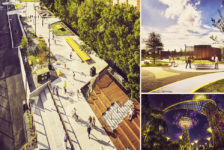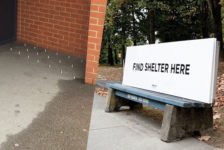School is starting again. In the next few weeks, the hum of professional networking events will return and clients and fellow consultants will be back in town. But there is still a little time left to fit in one or two more summer reads. Following up from my previous article “Five Recommended Reads for the Summer,” below are five more recommended books to keep creativity sharp.
 Art’s Principles: 50 years of hard-learned lessons in building a world-class professional services firm by Arthur Gensler and Michael Lindemayer
Art’s Principles: 50 years of hard-learned lessons in building a world-class professional services firm by Arthur Gensler and Michael Lindemayer
The 62 lessons are each several pages and accompanied with playful hand sketches to illustrate concepts in a total of 318 pages. Any lesson stands alone, but the book is also a nice read cover to cover. The distilled wisdom is readable, but profound in a way that makes it worth reading twice. It fits easily in a briefcase or purse and is a perfect read for the lines at the airport. You just may want to have a pen handy to underline.
 The Upcycle: Beyond Sustainability – Design for Abundance by William McDonough and Michael Braungart
The Upcycle: Beyond Sustainability – Design for Abundance by William McDonough and Michael Braungart
As a follow up to Cradle to Cradle written over a decade earlier, this book discusses changes during the intervening years and looks at what the future may hold. McDonough has an unmatched optimism that is a marked contrast to the prevailing cynicism. As sustainability becomes more mainstream to the profession and as we adjust to another version of LEED, it is worth revisiting sustainability’s purpose and the value it adds. In 227 pages, this book is like a ray of sunshine to have on hand for a rainy weekend.
 Cities and the Wealth of Nations by Jane Jacobs
Cities and the Wealth of Nations by Jane Jacobs
With the audacity to call macro-economics in the 1980s, when this book was written, “in shambles,” Jacobs delivers a still provocative and easily accessible read on economics as it relates to city and region. The ideas are strangely prescient of today’s issues and are a great introduction to Jane Jacobs if you have avoided reading The Death and Life of Great American Cities, a longer and denser classic. At 272 pages, Cities and the Wealth of Nations is a small book that could fit in your pocket and be read anywhere.
 In Praise of Shadows by Junichiro Tanizaki
In Praise of Shadows by Junichiro Tanizaki
More of an essay than a book, this short work of 56 pages by a Japanese novelist explores his culture’s aesthetic approach to creating a sense of space. In terms of causing a paradigm shift in the fewest number of pages, there is probably no equal for a creative jolt. A great book to read in a spare hour.
 Feral: Rewilding the Land, the Sea, and Human Life by George Monbiot
Feral: Rewilding the Land, the Sea, and Human Life by George Monbiot
Generational amnesia is the tendency for each generation to assume what is present day is the normal baseline and is what has always been. With journalistic flare, Monbiot exposes how many of our assumptions of what is the natural world are, in fact, faulty. He passionately argues for bringing back wild animals such as the beaver that have been lost to certain regions and explores scenarios to make that happen. Monbiot’s enthusiasm for the wild is a good reminder of why many of us choose the profession of landscape architecture in the first place. At 344 pages, content and delivery make for an absorbing read. This book is a good one for a cross-country flight.
Read one or more. Each one adds a different perspective to our practice with inspiration, insight, or humor. Do you think that there should be another book on this list? Please provide a comment below to share.
—
Lisa Horne, PLA, LEED AP BD+C is a landscape architect and Project Director at RVi Planning + Landscape Architecture in Dallas. See her current reading list at Goodreads.








